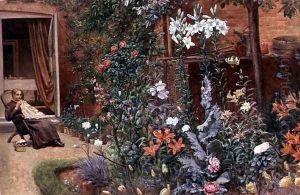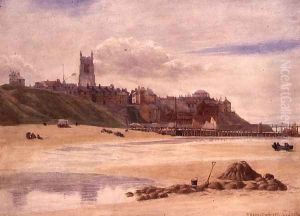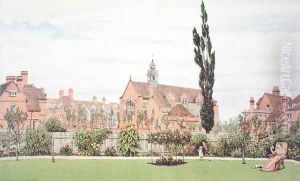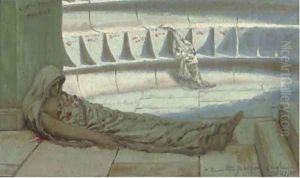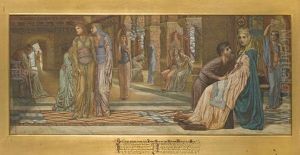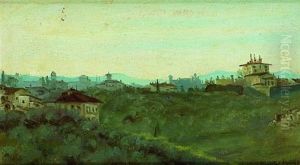Frederick Hamilton Jackson Paintings
Frederic Hamilton Jackson was an English painter, illustrator, and designer known for his contributions to the Arts and Crafts Movement. Born on December 21, 1848, in Bradford, West Yorkshire, England, Jackson grew up during a period of significant industrial and cultural change. This environment influenced his artistic development and his inclination towards the handcrafted quality of the Arts and Crafts ethos.
Educated at Bradford Grammar School, Jackson later moved to London where he continued his artistic education at the South Kensington School of Art, which later became the Royal College of Art. He was also involved with the Art Workers' Guild, an organization that was central to the Arts and Crafts Movement, which aimed to promote the value of craftsmanship in the face of increasing industrialization.
Jackson's work encompassed a variety of mediums, including painting, book illustration, stained glass design, and teaching. He was known for his landscapes and architectural subjects, often rendered with a keen sense of detail and a romantic sensibility. His illustrations appeared in numerous publications, and he was particularly adept at capturing the character of old buildings, a subject for which he had a deep affinity.
In addition to his artistic work, Jackson was an influential educator. He taught at the Chester School of Art and later at the Liverpool School of Art, where he influenced a generation of artists and designers. His teachings emphasized the importance of craftsmanship and the integration of art into everyday life, hallmarks of the Arts and Crafts Movement.
Frederic Hamilton Jackson's contributions to the Arts and Crafts Movement extended beyond his own art. He authored several books on the topics of art history and technique, including 'The Practical Draughtsman's Book of Industrial Design' and 'Decorative Design: An Elementary Textbook'. These works reflected his belief in the importance of design education and his commitment to spreading the principles of the movement.
Jackson died on August 5, 1923. Though perhaps less well-known than some of his contemporaries, his work remains a testament to the values of the Arts and Crafts Movement. His legacy is preserved not only in his art and written works but also in the enduring influence he had on his students and the broader design community of his time.
